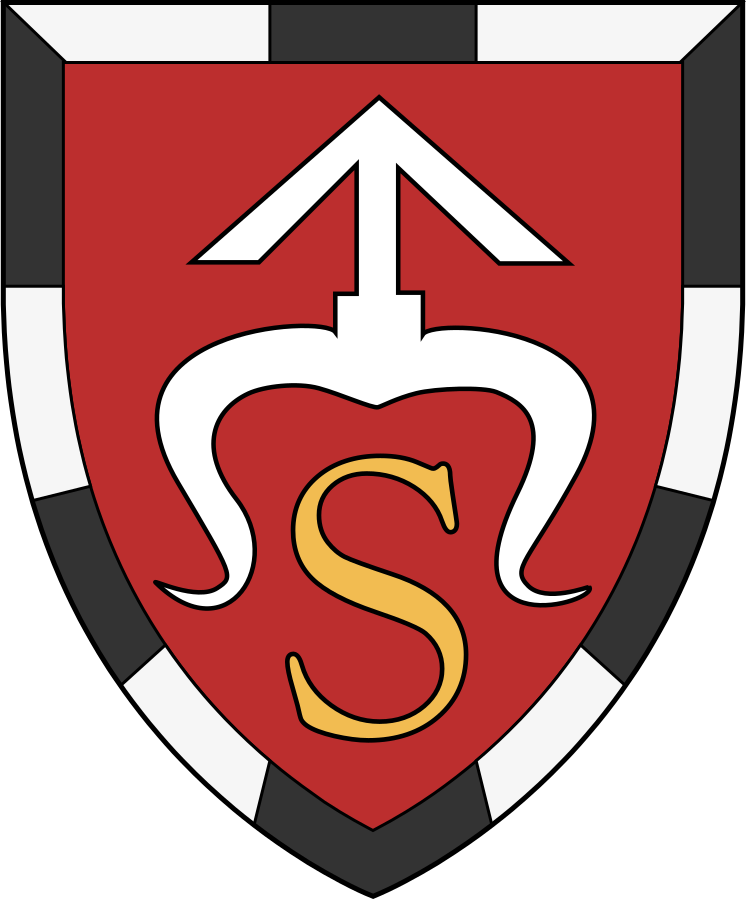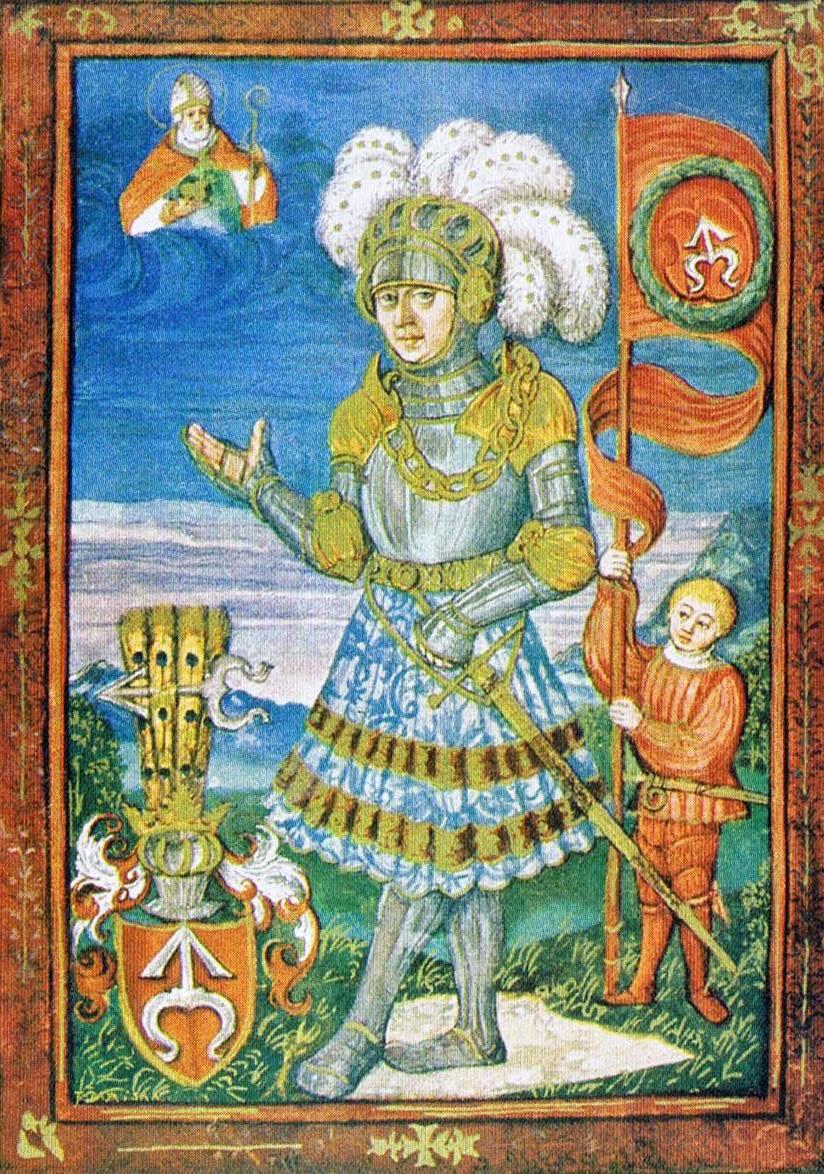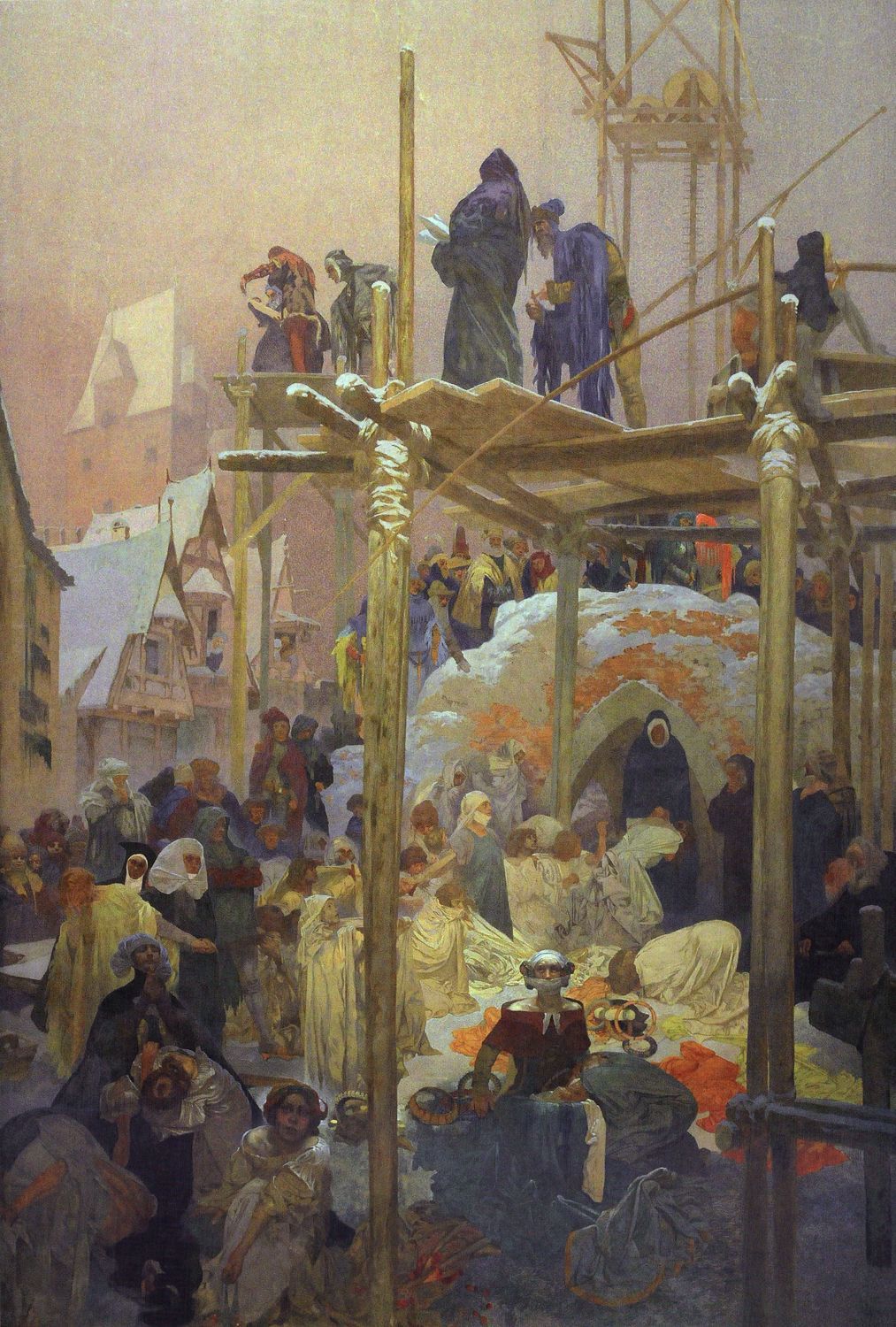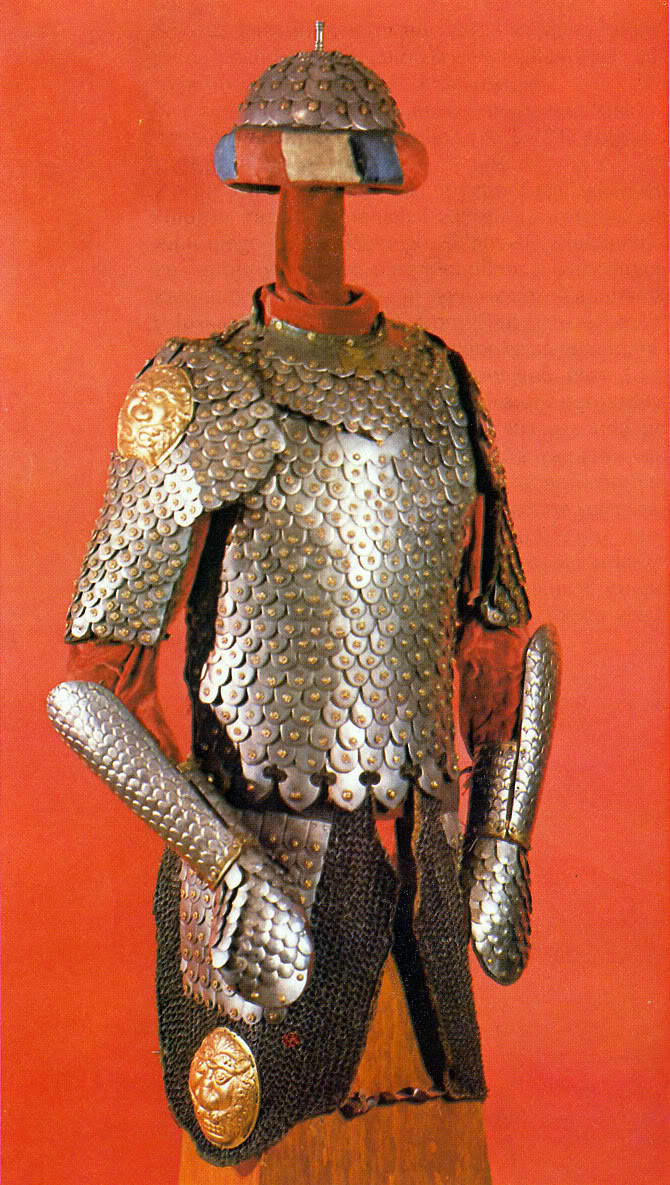House Sakovich
House Sakovich was a Ledzian-Sokolian dynastic house or dom and later a heraldic clan active from the 36th to the 38th century. Part of the landed gentry of Saker, on Cape Radog, the Sakovich benefitted from the Ledzian-Sokolian Union perhaps more than any other Sokolian house and made a lasting mark upon Ledzian history and culture. Though their male line died out in the early 3700s, the Sakovich married into the family of one of their lesser shieldbearers, the Amforowicz, who continue their legacy to this day as one of Ledzia's most powerful clans.
Structure
Because of their Sokolian origin, the structure of House Sakovich differed from their Ledzian colleagues, though not in unprecedented ways. During much of their existence, the Sakovich were referred to as a house (dom) rather than a clan (rody). Rather than numerous family branches, some distantly related from the original, that characterizes most Ledzian clans, the Sakovich were always consanguinous and often direct in their succession. The Primate and Magnate were generally siblings, with seniority dictating who inherited.
Culture
The Sakovich were far more culturally Sokolian than their fellows, and even after the upheavals of the Zivan Schism, were slow to assimilate into Ledzian culture. Though their origins were provincial and conservative, the wealthy Sakovich always dabbled in the cutting edge of fashion, something easily afforded them through their connections in cosmopolitan Saker. At a time when Gnostic fashions like long trimmed tunics and heavy, extravagant mantles were still the mode of the nobility, the Sakovich were keener on fashion that would become the norm for Ledzia in the following centuries.
Much of this was owed to the Temic mythos promoted by a number of prominent Sakoviches. This elaborate schema was first conceived by Cyrbodan the Manumittent, the court wizard for the first Tsar of Temirvald. Her writings postulated that the humans of eastern Quercardua and northwestern Auromachia were of the "Temic" race, survivors of the Past-Before-the-Past and inheritors of the ocean-spanning Abraxiad Empire. The scholarly notion was intended to give Redbeard legitimate claim to all the Abraxiad territories, but to eager dilettantes like the Sakovich, it was an easy way of garnering imperial prestige. Temicism took Ledzia by storm, flourishing especially during the time of the Union thanks to houses such as the Sakovich.
Assets
The Sakovich were a wealthy and powerful family, but elected not to expand their folwark much past the borders of their 3628 appointment. This mattered little, as over the course of their rule, the Sakovich transformed the folwark into one of the richest in Ledzia. Trakas doubled in size after years of famine and warfare, from a crossroads castle town to a legitimate city and commercial hub.
The Sakovich were not military-minded, and could only call upon a small retinue of a thousand at the most. This levy was nonetheless well-drilled and equipped, as was shown by Mikalaj the Unctuous' sorties against the Dorman. This small but semi-professional core of shieldbearers would eventually inherit the clan's wealth and prestige through one of its more illustrious members, the Amforowicz, who would become one of the most militarily powerful clans in modern-day Ledzia.
History
House Sakovich is first recorded in the 3550s as a minor noble family in the Radog Republic, one of the numerous Abraxiad successor states formed in the empire's collapse. Their name, originally Sakavici, simply means "from Sakarios," the name of the metropolis of Saker at that time. The Sakavici were the kephale of several villages south of the city, and were frequent partisans in the struggle for increased noble privileges, a struggle that ended when Radog was annexed by the nascent Kingdom of Sokol in 3568. After the annexation, the Sakavici changed their name to the Temic Sakovich and became vocal supporters of the Tsar. Regardless, they remained unpopular in Radog, especially during the turbulent years that followed, with the Sokolians imposing Temic values on the democratic and mercantile Radogian populace.
For the next seventy-five years, the Sakovich appear mostly as sycophants for the monarchy in Radog, controlling much of the farmland surrounding Saker (as Sakarios was renamed) and effectively turning it into an island of Abraxiad values in a sea of Temic feudalism. The Sakovich kept out of city politics or courtly intrigues, preferring to quietly gobble up the Cape's remaining freeholds and brandish their good behavior in the presence of the Tsar. For this time, their name became synonymous in Sokol with unctuousness and performative parochialism. It was a gambit that would eventually pay its dividends.
After Uzh's rebellion, Sokol- which had found itself floundering in debt and too backward to maintain the vast Abraxiad infrastructure within its borders- entered into a personal union with the newborn land of Ledzia, poised to become an agrarian power. It was an awkward arrangement, but the Sokolians were desperate, and in the first years of the union, a doctrine of "separate but equal" became the norm. To progress under the new order, the Sakovich found themselves having to play chameleon once again.
In 3628, in an effort to end the internecine clan feuding that had terrorized the Mozurian Plain, the Tsarina Aleksandra granted the town of Trakas and its surrounding territory in a twenty-five mile radius to the Sakovich. It was a last-ditch solution with little practical value, as the Sakovich were simply a noble house with few retainers, and not even a Primate to represent them in the ruling chambers at Roztyn. Regardless, rather than govern as foreigners, the Sakovich began referring to themselves as a rody and invited numerous lesser Ledzian families into their fold as shieldbearers, granting them land from the folwark they had been awarded. To gain favor among their new subjects, the household head, Ladislav, underwent the Dare of the Radish during the Festival of the Divine Herb that year. Ladislav was dared by the burghers of Trakas to swim naked through the brackish marshes along the banks of the lake while holding three radishes in his teeth. Ladislav succeeded and, in return, was ordained Primate to represent his house in the political affairs of the Union.
Ladislav did not forget the humiliation of the Dare, however, and within the walls of Trakas, the Sakovich ruled with an iron fist. Ladislav's sister, Irinka, the Magnate of Trakas, stripped the craftsmen of their privileges and banned Charters of Rights. Despite their autocracy, the Sakovich were benevolent rulers, who used their gains to invest in the betterment of the city, which had seen a fair share of violence in the preceding decade. The protests of the would-be guildsmen were drowned out by the revelry of the Festival of the Divine Herb, which became an increasingly exuberant spectacle in the years to follow.
The Sakovich, and Trakas, gained their stride under the rule of Magnate Mikalaj "the Unctuous," from 3639 to 3657. Mikalaj oversaw the construction of the Cathedral of Ziva of the Valley, a monumental church and monastic complex that came to dominate the city and won them great prestige. Mikalaj and his retinue won glory at the Battle of the Knuckled Tree against the Dorman in 3647, and he was awarded a snow leopard cape by the Elfish commander, the Bishop of Artuax. Mikalaj invited scores of Sokolian artisans and freed serfs to live and work in Trakas and the surrounding lands; this influx put Mikalaj further at odds with the guilds in Trakas, but also weakened them considerably. The resulting Mozurian Style, influenced by classical Abraxiad designs but combined with floral and organic Ledzian motifs, became celebrated commodities throughout the land; Sokolian culinary traditions like cold beet soup also became so fantastically commonplace that they are now often assumed to be Ledzian inventions.
Following Mikalaj's untimely death (he was sat on by a warhorse) the tensions created by the Union, and indeed the Sakovich, came to a head. The Sakovich were at the center of the conflict between the pro-Sokolian monarchy and the pro-Ledzian clergy, both who wielded exceptional power in different regions of the country. The Sakovich's wealth and political opportunism had failed to win them allies even in the pro-monarchy camp, and thusly Mikalaj's successor as Magnate, his daughter Zofia, moved towards rapprochement with the clergy instead. This coincided with the Primacy of her cousin Iwo, one of the great freethinkers of his day; a far-travelling man of letters, Iwo installed a library of codices in the Cathedral of Ziva that was rivalled only by that of Razdraz, and initiated the practice of teaching serfs fertility magic. In 3666, he and Zofia consecrated the first hospital in Mozuria, the Hospital of Zeshyk (named for the guardian water spirit of Lake Trakas).
The Sakovich folwarks continued to thrive, and at last the guilds and commoners were placated- but Iwo's radical views did not endear him to any of his colleagues, and Zofia's anxieties could not match Mikalaj's martial prowess. The neighboring clans of Ostoya and Radvilos, who had never ceased their feuding, began to turn instead on the house's fortunes, knowing there would be little to answer for. Only the common popularity of Iwo, who became a folk hero to the serfs of Mozuria, prevented them from sacking Trakas itself.
When the Zivan Schism became bloodily apparent in the spring of 3677, Zofia and Iwo found themselves immediately at odds with one another. As Primate, Iwo was well-poised to ensure the houses's survival, but he was openly combative with the Ledzian Archimandrites in the chambers at Roztyn. Pogroms and purges soon became commonplace. In the southwest, the fellow Sokolian House Lebedz was deposed by Clan Olbrychinski and in their escape was massacred by an angry mob. In retaliation, Sokolian knights under the spellsword Pavel Zerekalnikov abducted the Archimandrite Olbrychinski and performed a show trial in Lyubim that accused him of "millenarianism." He was executed, and the Union found itself in a state of near-civil war. Like jackals eyeing scraps of meat, Clans Radvilos and Ostoya began massing in separate camps on the Mozurian Plain near Trakas, dispatching messengers stating that if the Sakovich did not hand over Iwo, they would sack the city.
Zofia did the unthinkable; rather than betray her cousin to the murderous Radvilos and Ostoya, she had him imprisoned as a heretic, renounced his teachings, had his library arrayed in a bonfire and his icons trampled. In his place she appointed her 22 year-old son, Kresemir, as Primate, disqualifying him from succession. Kresemir was as shrewd and mercenary as his grandfather and the Sakovich before him. He invited the Radvilos and Ostoya onto a pleasure barge on the lake and gave them a choice- take his second cousin's treasury, or split the city of Trakas three ways. Both opposing parties agreed. It is said that Kresemir had intended to sink the barge and all on it if he could not get his way, but this is likely an embellishment; the events of the Schism proved once and for all that the Sakovich highly valued their survival.
Rumors immediately circulated that the Ostoya planned instead to seize the city for themselves by subterfuge. As the magnate Bogdan Ostoya's procession entered the city on the night of the 12th Fervidus via the Ortolan Bridge, the portcullises were closed, trapping them. The Sakovich and Radvilos fired arrows onto the bridge from the towers of the castle and barbican and boats on the lake. As many as a hundred were said to have been killed; Bogdan and three of his concubines were said to escape by stripping their finery and swimming to safety. The massacre came to be known as the Night of Sharpened Beaks.
Disbandment
Though the Sakovich had escaped the fate of many other Sokolians during the Schism, Zofia's strategy only postponed their obsolescence. Kresemir's primacy was highly successful for the Sakovich; by keeping to themselves and making the customary displays of contrition and loyalty that had characterized the house for centuries, they recovered their prestige. In 3689, partially in recognition of the numerous Ledzian families that now carried their arms, the Sakovich were made a heraldic clan by Patriarchal decree. By this, Kresemir was also made Archimandrite, the first of Sokolian origin.
He would also be the last. When he died in 3714, he was the end of a shrunken male line further decimated by tragedy and disease. In 3717 Zofia's granddaughter Lariska wed Anton, her bodyguard and a rotamaster in one of the clan's shieldbearing families, the Amforowicz, and all of the clan's possessions passed to their name.
DISBANDED/DISSOLVED

c.3556 - 3717
Type
Geopolitical, Clan
Successor Organization
Demonym
Sakovich
Parent Organization
Location
Neighboring Nations
Related Ethnicities






Comments